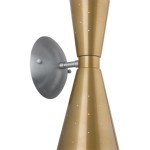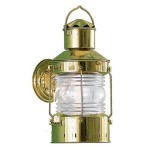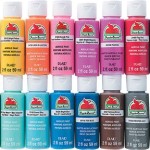Flickering Light Bulbs For Outdoor Lighting: Causes, Solutions, and Prevention
Outdoor lighting plays a crucial role in enhancing the safety, security, and aesthetics of residential and commercial properties. However, a common issue encountered is flickering light bulbs. This article delves into the reasons why outdoor light bulbs flicker, explores potential solutions, and outlines preventative measures to ensure consistent and reliable illumination.
Understanding the Nature of Flickering
Flickering, in the context of light bulbs, refers to the rapid and often irregular fluctuation in light intensity. This can range from subtle variations to noticeable on-off pulsations. The problem is more than just an annoyance; prolonged flickering can cause eye strain, headaches, and even trigger seizures in individuals with photosensitive epilepsy. Furthermore, frequent flickering can shorten the lifespan of the bulb and potentially indicate underlying electrical problems within the lighting circuit.
The perception of flickering can also depend on the type of light bulb used. Incandescent bulbs, for example, utilize a heated filament to produce light. The filament's temperature fluctuates with the alternating current (AC) electricity supply, leading to a slight, often imperceptible flicker. LED (Light Emitting Diode) bulbs, on the other hand, are more efficient and are less susceptible to this type of flicker. However, LED bulbs are subject to their own set of potential flickering causes.
The severity of flickering can provide clues about the root cause. A slow, rhythmic dimming and brightening might indicate a voltage drop or loose connection, while a rapid, erratic flicker could suggest a problem with the bulb itself or the wiring.
Common Causes of Flickering in Outdoor Lighting
Several factors can contribute to flickering outdoor light bulbs. Identifying the specific cause is essential for implementing the correct solution.
Loose Connections: Loose wiring is one of the most frequent culprits. Outdoor environments are exposed to the elements, leading to corrosion and loosening of connections over time. Vibration from wind or nearby traffic can also contribute to this. Inspect all connections, including those at the light fixture, junction boxes, and the circuit breaker panel. Ensure all wires are securely fastened and protected from moisture.
Voltage Fluctuations: The electrical grid is subject to fluctuations in voltage, especially during periods of high demand. These variations can cause lights to dim or flicker, particularly if the circuit is already close to its maximum capacity. Check the voltage at the outlet with a multimeter to determine if it is within the acceptable range for your area. If the voltage is consistently low or erratic, contact an electrician to investigate the power supply.
Faulty Bulbs: A damaged or defective bulb can cause flickering. This is especially true for older incandescent bulbs nearing the end of their lifespan. Try replacing the bulb with a new one to rule out this possibility. Ensure the replacement bulb is compatible with the fixture and designed for outdoor use.
Wiring Issues: Problems within the wiring, such as damaged insulation, frayed wires, or improper grounding, can also lead to flickering. These issues can create intermittent short circuits or voltage drops, causing the lights to fluctuate. A thorough inspection of the wiring by a qualified electrician is necessary to identify and repair any such damage.
Water Damage: Outdoor lighting fixtures are vulnerable to water intrusion, which can corrode connections, damage wiring, and cause short circuits. Ensure that all fixtures are properly sealed and rated for outdoor use. Check for any signs of water damage, such as rust, corrosion, or moisture inside the fixture. If water damage is present, disconnect the power and replace the affected components.
Dimmer Switch Compatibility: Using a dimmer switch that is not compatible with the type of bulb can cause flickering. LED bulbs, in particular, require dimmers specifically designed for their lower power consumption. Check the specifications of both the dimmer switch and the bulb to ensure compatibility. If they are not compatible, replace the dimmer switch with a suitable model.
Transformer Issues (Low Voltage Lighting): Low voltage outdoor lighting systems often rely on transformers to step down the voltage from the main power supply. A faulty transformer can cause flickering or even complete failure of the lighting system. Check the transformer's input and output voltage to ensure it is functioning correctly. If the transformer is faulty, it should be replaced by a qualified electrician.
Troubleshooting and Resolution Strategies
When faced with flickering outdoor lights, a systematic approach to troubleshooting is crucial. Start by identifying the specific symptoms and gathering information about the lighting system.
Visual Inspection: Begin with a visual inspection of the entire lighting system. Look for any obvious signs of damage, such as cracked fixtures, exposed wires, or corroded connections. Check the bulb socket for corrosion or loose contacts. Make sure the bulb is securely screwed in.
Bulb Replacement: As mentioned earlier, replacing the bulb is a simple and effective first step. Use a new bulb of the same type and wattage. Ensure the bulb is designed for outdoor use and rated for the fixture. If the flickering stops after replacing the bulb, the original bulb was likely the cause.
Testing Connections: Turn off the power to the circuit breaker before inspecting any wiring. Use a non-contact voltage tester to confirm that the power is off. Carefully examine all connections at the light fixture, junction boxes, and the circuit breaker panel. Tighten any loose screws or wire nuts. Clean any corroded connections with a wire brush and apply dielectric grease to prevent further corrosion.
Voltage Measurement: Use a multimeter to measure the voltage at the outlet while the lights are flickering. Compare the measured voltage to the nominal voltage for your area (typically 120 volts in North America). If the voltage is significantly lower or fluctuates erratically, there may be a problem with the power supply. Contact an electrician for further diagnosis and repair.
Professional Assistance: If the flickering persists after performing these basic troubleshooting steps, it is recommended to consult a qualified electrician. Electrical problems can be complex and dangerous, and it is essential to have a professional diagnose and repair any underlying issues.
Preventative Measures for Long-Term Reliability
Proactive maintenance and preventative measures can significantly reduce the likelihood of flickering outdoor lights and extend the lifespan of the lighting system.
Regular Inspections: Conduct regular inspections of the outdoor lighting system, at least once a year. Look for any signs of damage, corrosion, or loose connections. Address any issues promptly to prevent them from escalating.
Weatherproofing: Ensure that all outdoor lighting fixtures are properly sealed and rated for outdoor use. Apply weatherproof sealant around any exposed connections or openings. Consider using fixtures with a higher IP (Ingress Protection) rating for areas that are exposed to harsh weather conditions.
Proper Wiring: Use the correct gauge of wire for the lighting circuit and ensure that all wiring is properly installed and grounded. Consult with an electrician to determine the appropriate wiring for your specific application.
High-Quality Bulbs: Invest in high-quality LED bulbs from reputable brands. While they may be more expensive initially, they typically last longer and are less prone to flickering. Choose bulbs that are specifically designed for outdoor use and can withstand temperature fluctuations and humidity.
Surge Protection: Install surge protectors to protect the lighting system from voltage spikes caused by lightning or power surges. These devices can help prevent damage to the bulbs and other electrical components.
Professional Maintenance: Consider hiring a qualified electrician to perform regular maintenance on the outdoor lighting system. This can include inspecting wiring, tightening connections, cleaning fixtures, and replacing bulbs as needed.

Hudson Led Flame Effect Light Bulbs With 4 Mode Upside Down 3w Flicker Bulb E26 E27 Base 2 Pack Flickering Orange Fire For

Buy Flickering Led Flame Light Bulbs The Worm That Turned Revitalising Your Outdoor Space

C7 Light Bulb Flicker Flame Clear Bulbs Pack Of 2

Bell Howell Flickering Flame Led Bulb As Seen On Tv Indoor And Outdoor Use Com

Euri Lighting 6 Watt Equivalent Ca9 5 Flickering Flame Led Light Bulb 1 Eca9 2120fcb The Home Depot

Flickering Edison Bulb Table Lamp

Outdoor And Backyard Lighting We Love Reviews By Wirecutter

C7 Light Bulb Flicker Flame Clear Bulbs Pack Of 2

Euri Lighting 6 Watt Equivalent Ca9 5 Flickering Flame Led Light Bulb 1 Eca9 2120fcb The Home Depot

Do Light Bulbs That Flicker Like Gas Flame Look Real Abbotts At Home
Related Posts







